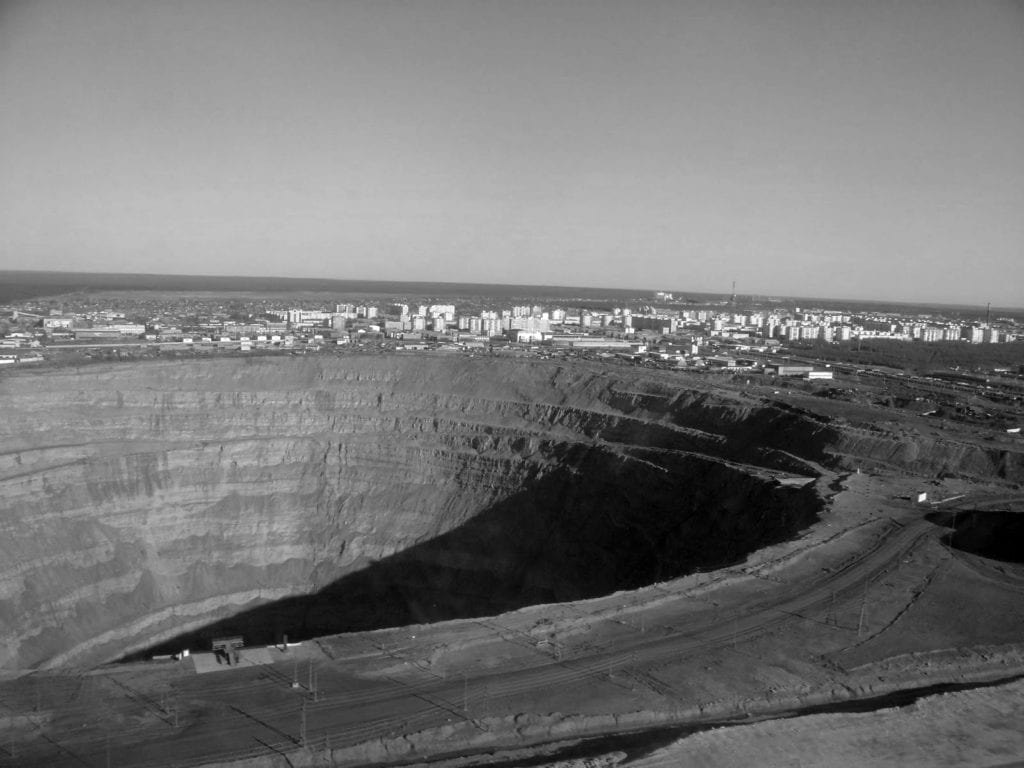Mining diamonds has for years been a very lucrative business, with mine operators digging vast pits in diamond-rich geology, pulling huge amounts of rock from the ground to be broken down and the tiny gems extracted.

Diamond mines exist in southern Africa, Russia, Canada and Australia, plus a handful of other places, and the perception is of ‘bottomless pits’ filled with gems just waiting to be discovered. The reality is a little different.
In Canada, the Victor Mine recently celebrated its 10-year anniversary, taking place alongside operations to close the mine down. This is planned for February 2019, and although it has been a profitable mine for De Beers, the owners, that is no longer the case. Kimberlite deposits, where the diamonds are found, are generally conical, and the open pit has now reached the limits of the deposit.

Across the last 10 years, 7.2 million carats have been extracted from the mine, (from 85 million tonnes of ore), at a cost of $2.7 billion, but an additional part of the economic equation at Victor Mine has been that it is not accessible by road year-round. An ice-road must be constructed during January and February to bring in larger items, with access by air only for the rest of the year; clearly a costly way to run a business.
The problem that always occurs once a mine is decommissioned, is that there remains a huge hole in the ground, a significant spoil heap, and a large industrial complex, plus access roads, and other infrastructure, as can be seen above.
RECLAMATION WORK
De Beers has been growing trees and conducting reclamation work around the site for several years, with greenhouses producing saplings and young plants to replace what was removed, but even so, it is worth asking whether what goes back can ever be the same as what was taken. Also, how long will it take the wildlife to recolonise this area, and re-adjust disrupted migration routes and feeding patterns?
Another mine in Canada, the Jericho Mine, shows what happens if things go wrong with this process.
After just two years of mining activity in 2006-08, and a handful of months of work by another contractor to extract overlooked diamonds from the spoil heap, the mine was declared to be officially abandoned. It was handed over to the Government in Canada in 2015, and discussions began on how to deal with the site - see images below for a small snapshot of what's there. After dismissing an offer to use the site as a processing plant for as-yet-undeveloped potential mines nearby, a clean-up plan is being implemented. At a cost of around $10m, the extensive plan covers aspects such as water use, waste disposal, fuel storage, wildlife and aircraft restrictions. There is also the small matter of two nuclear gauges on the site, which powered machines to x-ray the rocks that were extracted from the mine (in layman’s terms).
It’s a sad fact that, even once the mining operations have ceased, diamond mines are still causing extensive environmental disruption. Even careful environmental work such as De Beers is carrying out at Victor Mine cannot exactly replace the environment and biodiversity that were lost, and Jericho Mine is an example of how easily it can all go wrong. The mined diamond is a cause of environmental destruction – there is no doubt about it – and anyone with concerns about the way their planet is being treated should consider their options very carefully when purchasing diamonds. The best environmentally sound alternatives are those grown above-ground. We offer two options: super premium moissanite, grown in a lab with the only by-product being water, and lab grown diamonds grown using renewable energy - both are a fraction of the cost of mined diamonds.
Read Next

Colour is the New Classic: Engagement Ring Trends to Watch
This summer, coloured engagement rings are taking over. Discover why modern couples are choosing lab-grown stones for their ethical beauty, individuality, and timeless charm.

Your Love Story, Uniquely Told: Three Ways We Make Engagement Rings Truly Yours

Ethica Collaboration With Joanna Lumley For Born Free Foundation
Ethica has created a unique pendant and the proceeds will support Born Free's conservation efforts, reflecting our commitment to giving back and making a positive impact.


